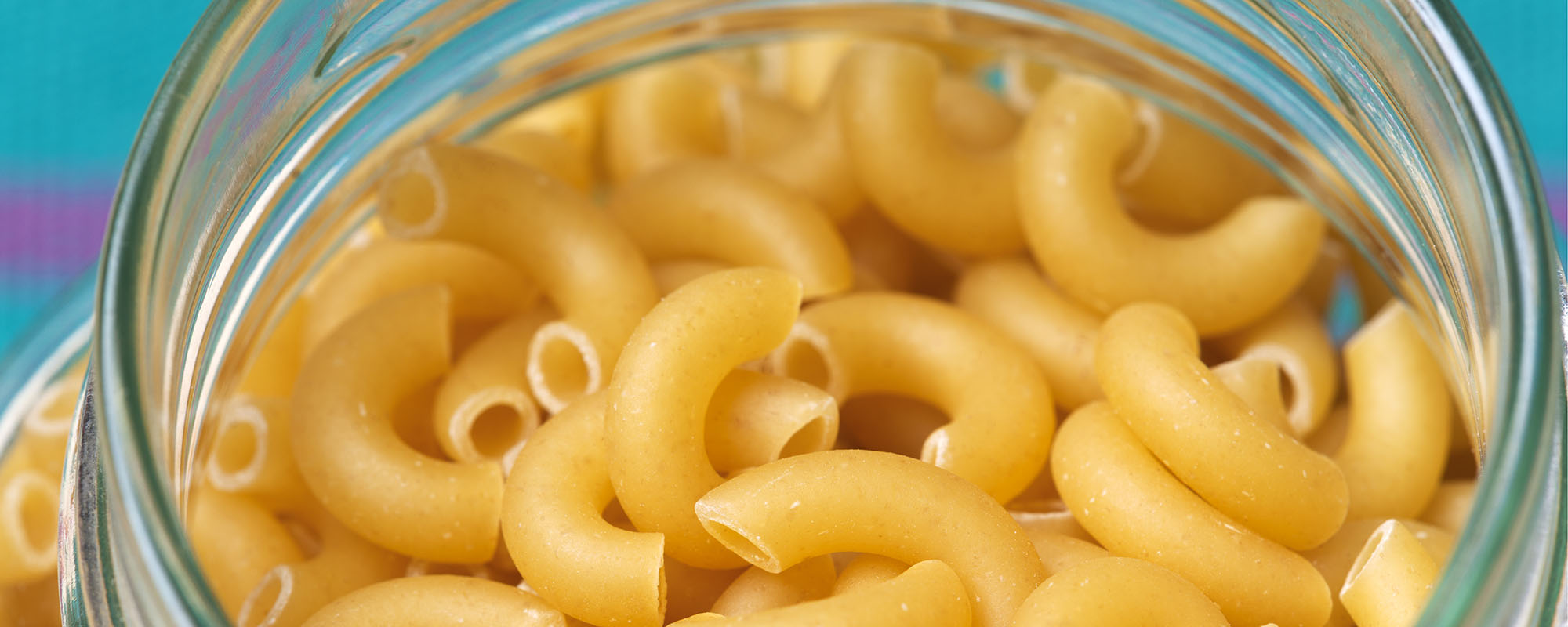
What’s the best way to prepare pasta?
In a large pot, boil 4 to 6 quarts of water per pound of pasta. (Adding salt is optional.) Gradually add pasta, stirring to separate it and return to a boil. Boil uncovered, stirring occasionally until desired tenderness. Drain. Serve immediately. When using cooked pasta in a recipe that requires additional cooking time, like macaroni and cheese or noodle casseroles, reduce the boiling time by 1 to 2 minutes.
How can I tell if my pasta is done?
“Doneness” really depends on your personal preference. Start by checking for doneness at the minimum recommended cooking time on the package. Test by tasting a single piece. Pasta should be “al dente” (“to the tooth”) or tender with a slight bite or firmness.
Can’t I just turn the heat off under the pot?
Unfortunately, it’s not that easy. The pasta will continue to cook in the hot water and become mushy if you leave it in water for too long.
How do I keep my pasta from sticking?
If you aren’t ready to serve the pasta just yet, you can toss the pasta with a little oil or butter to keep it from sticking together. If it gets cold while you’re finishing your dish, you can dunk it in a pot of warm water for a few seconds to bring it back to temperature.
When should I add the sauce to my pasta?
Pasta will absorb the sauce if left standing for even a short period of time, so we recommend adding your sauce immediately before serving.
Can pasta be cooked in the microwave?
Unless it’s a pasta product designed to be cooked in the microwave, we don’t recommend using your microwave. Pasta needs boiling water to cook properly and the microwave isn’t suitable for that.
How do I reheat pasta?
Cooked pasta without sauce can be dunked in a pot of hot water (preferably boiling) for about thirty seconds to bring it back to temperature. Cooked pasta and sauce can be reheated in the microwave.
Do lasagna noodles need to be cooked before using?
Yes, lasagna noodles must be cooked before layering your lasagna, unless you’re using our Oven-Ready Lasagna or a recipe developed for uncooked noodles. Those recipes typically contain extra liquid to cook the noodles during baking.
Can I add dry pasta to my soup without cooking it separately?
Yes, you can add dry pasta and let your soup do the cooking. You might want to add extra liquid (broth, water, etc.), since the pasta will absorb some.
Why do different shapes of pasta have different cooking times?
Each pasta shape has a recommended cooking time to achieve the best results, since they vary in thickness or length. Be sure to follow the directions on your package.
Why does pasta have a range of cooking time (i.e. 6-7 minutes)?
Doneness of pasta depends on your own preferences, so we give a range of cooking time that’s appropriate for most cooks. If you prefer a bit more bite to your pasta, use the shorter cooking time. In addition, pasta continues to cook after you remove it from the boiling water for a few more seconds, so finding the perfect time is as individual as you are!
How should I store my dry pasta?
Pasta should be stored in a cool, dry place like your pantry, and unopened, it can last there for up to two years. If you live in a humid, warm climate, consider storing your pasta in a plastic zipper bag or other sealable container to keep moisture away from it. It’s also okay to keep an opened box of pasta in your pantry for a couple of weeks, provided it stays in the box!
How long can I store my pasta?
Unopened pasta can last in your pantry for up to two years, but it’s best to follow a ‘first-in, first-out’ rule: always start with the package you’ve had in your pantry the longest. This way, you always know your pasta is as fresh as it can be.
What about storing prepared dishes?
All leftovers should be stored in a clean storage container and refrigerated within two hours. You may refrigerate leftover pasta for up to 3-5 days. For baked dishes like lasagna or stuffed shells, those can be prepared ahead of time and frozen until you’re ready to enjoy them. For best results, try these tips:
Lasagna: Assemble your lasagna in a baking pan as your recipe directs, omitting any cheese from the top. Do not bake it. Cover your pan with heavy-duty foil or freezer wrap, or place the entire pan into a large zipper freezer bag. Freeze for up to two months. When you’re ready to enjoy it, thaw your lasagna in the refrigerator for up to 24 hours. Remove foil, plastic bag, and any other wrapping. Cover with foil and bake as directed, removing the foil when your recipe calls for it. Check your lasagna to make sure the internal temperature reaches 165-185 degrees. And don’t forget to add the last layer of cheese to the top!
Stuffed Shells: Cook jumbo shells as directed on the packaged and fill as desired. Place filled shells on a large baking sheet, cover with plastic wrap, and freeze for several hours or until frozen. Move frozen shells to a sealed container or zipper freezer bag and return to the freezer until you’re ready to enjoy them. Meat or cheese-filled shells can last up to three months in the freezer. When you’re ready to enjoy them, remove the desired number of shells from the container and place in a baking dish. Spoon sauce generously over the shells, cover and bake in a 350-degree oven for 20-30 minutes or until the internal temperature reaches 165-185 degrees.

